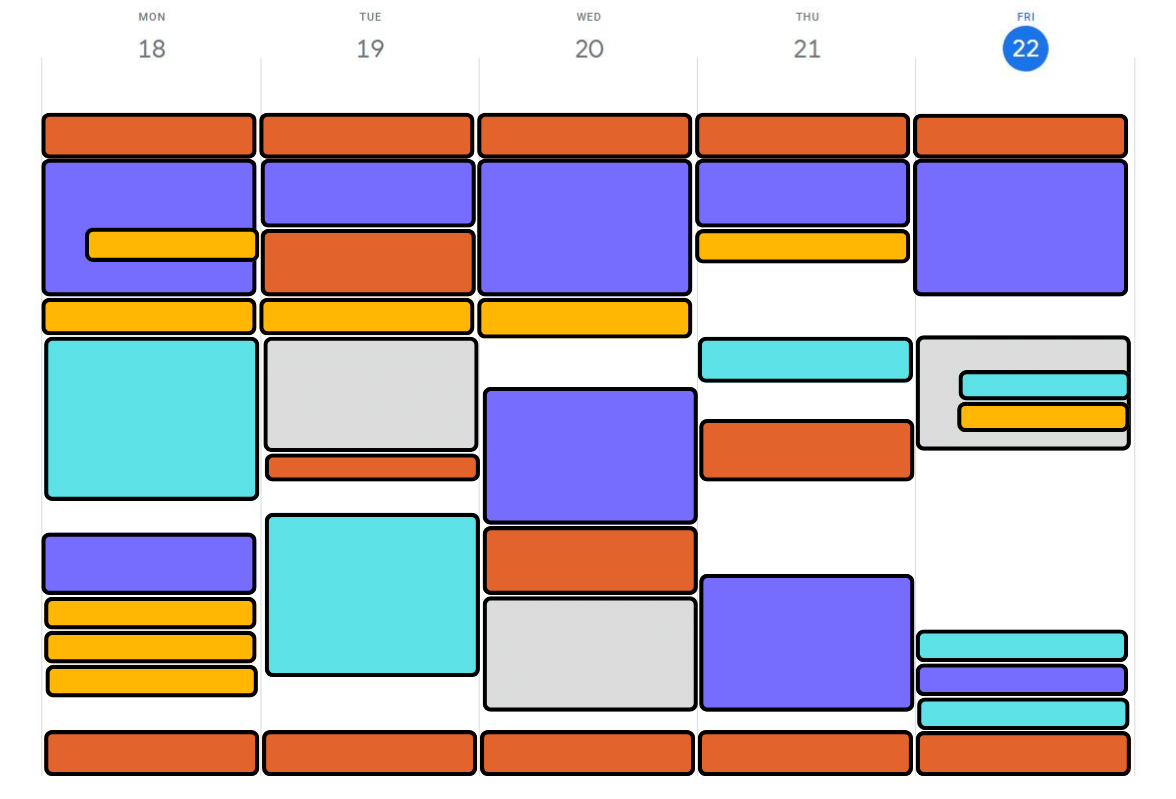There’s a pattern I’m seeing after the past year and a half of downsizing.
Content marketers are being asked to do not just more with less, but EVERYTHING with not enough. And when you’re struggling to maintain your sanity because you are in a constant state of overwhelm and your job is potentially on the line, you start to second guess your better instincts because you’re operating in a scarcity mindset.
In other words, you’re more easily gaslit into thinking that what you’re being asked to shoulder is normal.
I’ve had content marketers reach out to me privately about things I write here and on LinkedIn. “I thought I was the problem… but maybe I’m not?” Spoiler alert: you are not.
Digging yourself out of that hole of order taking is not easy (trust me, I know). But in this issue, I want to give you some tools to do it.
It starts — as do all good conversations — with data.
💪 Actionable Tip: Bring the Receipts
Way back in Issue #2 I talked a bit about saying no — namely that you can do it.
I mean, in a perfect world, you could. But you probably report to a head of marketing who is also under a lot of pressure to do all the things, and that trickles down. How do you help them prioritize so you can prioritize?
You need to build a case with data.
For me, I built what I called The List. You can pull it from Asana or whatever project management tool you use, but there are probably routine things that you do that aren’t even captured in there. Start listing everything (and I mean EVERYTHING) you are working on or planning. Each thing gets a line.
Here’s what it might look like:
Q4 white paper planning (writing starts next week)
Sept newsletter copy
Edit research report, waiting on SME approval (blocked)
Paid asset review for research report campaign
3 new website use case pages
Blog post on topic A
Blog post on topic B
New feature launch announcement with tie-in to PR and social campaigns
Thought leadership article with research and 2 SME interviews
etc. etc.
One time I built a doc like this that went onto a third page.
But we’re not done yet. Half the time you don’t even have time to work on this list because you’re too busy sitting in meetings to talk about the things on the list. So take a screenshot of your meeting schedule too and drop that in the doc.
Make a note here: “Given the number of things I have in flight and the lack of time for deep work, can we find some items that can be postponed, delegated, or deprioritized?”
I’ve never had this not work to at least open up a dialogue about how to make my workload more reasonable. It’s a short-term fix, but it does work.
Now you have to keep things moving in the right direction.
Bending the Spoon teaches content marketers the unspoken rules and actionable strategies that they need to prove their value at work.
🚫 Anti-Pattern: Campaign Content DIY
Are you the Resident Writer on your marketing team? I was too.
Often I’d find myself not only creating a core piece of content, but creating allllll the other pieces of content to promote it — social/email/ad copy, web page banners, SDR outreach, you name it.
It didn’t take me long to realize that this time suck was not sustainable. Just because I could write all the campaign copy didn’t mean I should have to. It was a perfect example of content “serving” demand gen instead of being a thought partner on the most important work.
So I decided things were going to work differently.
My demand gen friends needed to be able to self-serve and create their own channel-specific content. Did you know that writing can be taught?! It’s true!
Here’s how it worked:
I ran a one-time enablement session where I went over our brand style guide and copywriting best practices: “Here is how you write a subject line for an email. Here is how you write ad copy.” I also recorded it so it became part of every new marketing hire’s onboarding.
Every time I had a new piece of premium content in the pipeline, I’d do a quick show-and-tell for the marketing team. Here’s the customer pain point we’re addressing, and here are some ways you could write about it. Godspeed.
If and when I had time, I’d pop in to see how things were going and offer some pointers. I also made myself available over Slack if there were questions. But otherwise, I just provided a tool kit.
Was this system perfect? No.
Sometimes I would still need to intervene and advise a junior marketer on some element of writing for an audience. But it helped them begin to develop important skills (every demand gen marketer should be able to write campaign copy) and it helped me set reasonable boundaries on the work I would and wouldn’t be doing for the team.
💡 Big Idea: Own More to Do Less
Okay, this one’s the hardest and the most counterintuitive — but also the most impactful, if you can manage it.
Essentially you want to Trojan Horse the requests you receive.
Here’s what I mean: If you’re being told to be in 8 places at once, start owning the places you’re invited into.
My friends in product have a great question when they get a request for a new feature: what problem are you trying to solve? It focuses the requester to look at the end goal and consider the context of the ask. You think you’re asking for a connector between these two tools, but really you’re looking for a way to analyze two types of data at the same time, and maybe there’s a better way to do it.
You can adopt the same question: what problem are you trying to solve? Let’s solve it together. Maybe you can repurpose another piece of content for a new use case. Maybe you can help educate stakeholders on a better way to do things that takes work off your plate. Maybe you can show them that content isn’t the right solution after all.
Think like an owner of the process — like a leader — and you’ll likely find ways to strategically economize your time. When you begin to own the task, you begin to control the outcome.
Yours in contention,
Lauren
P.S. How are you liking Contentious? Is there anything I should be writing more (or less) about? Send me a message below — I’d love your feedback:









